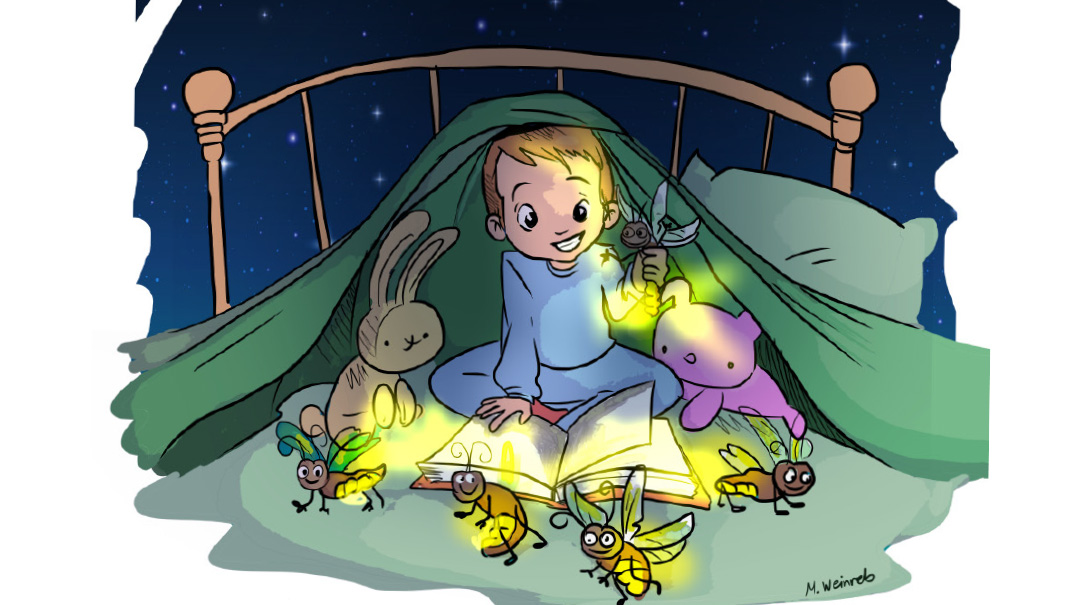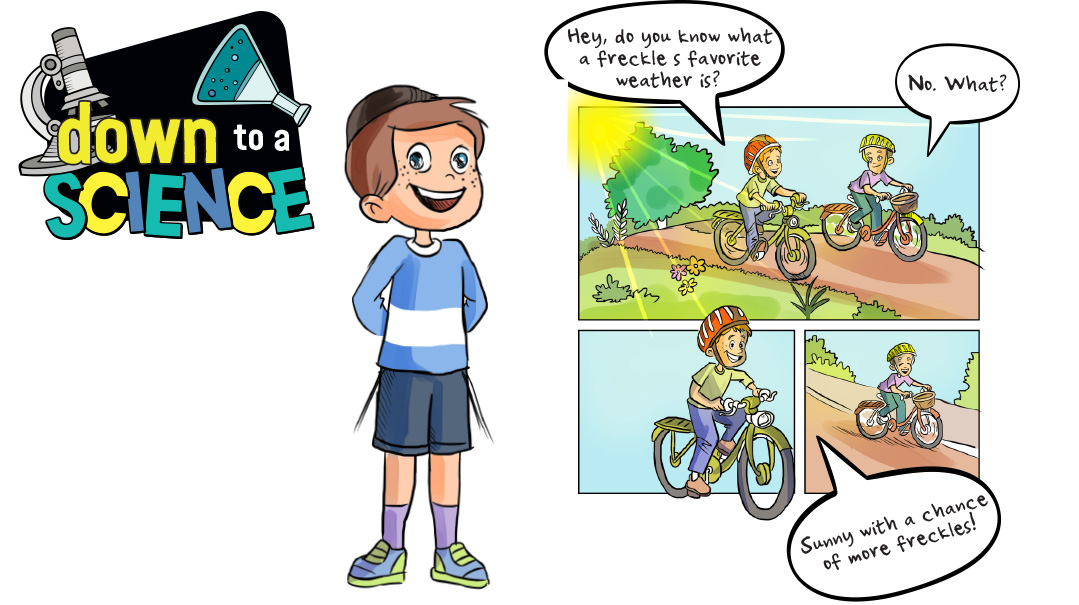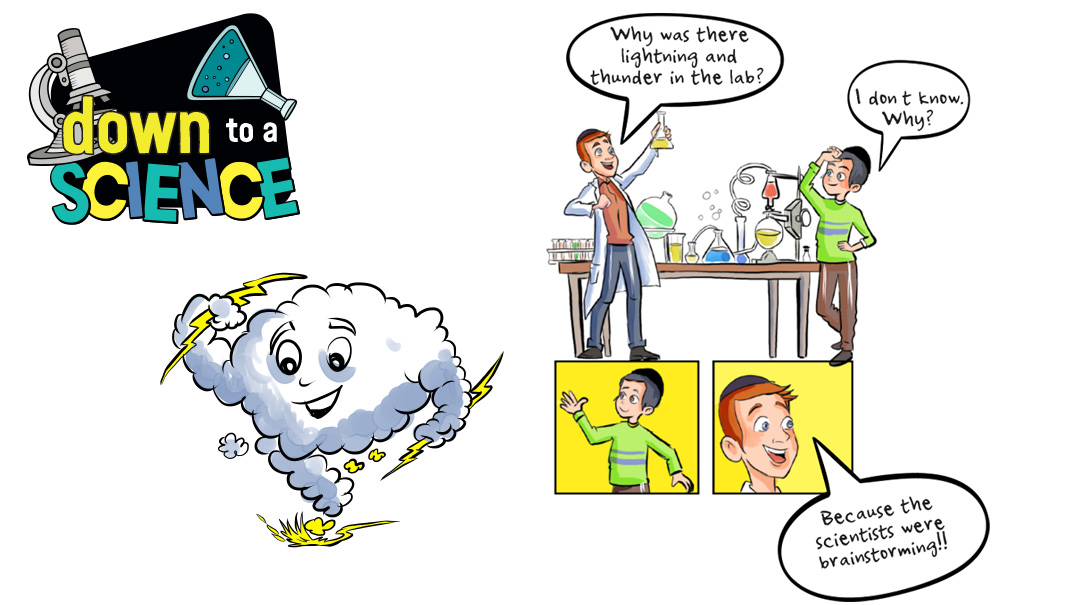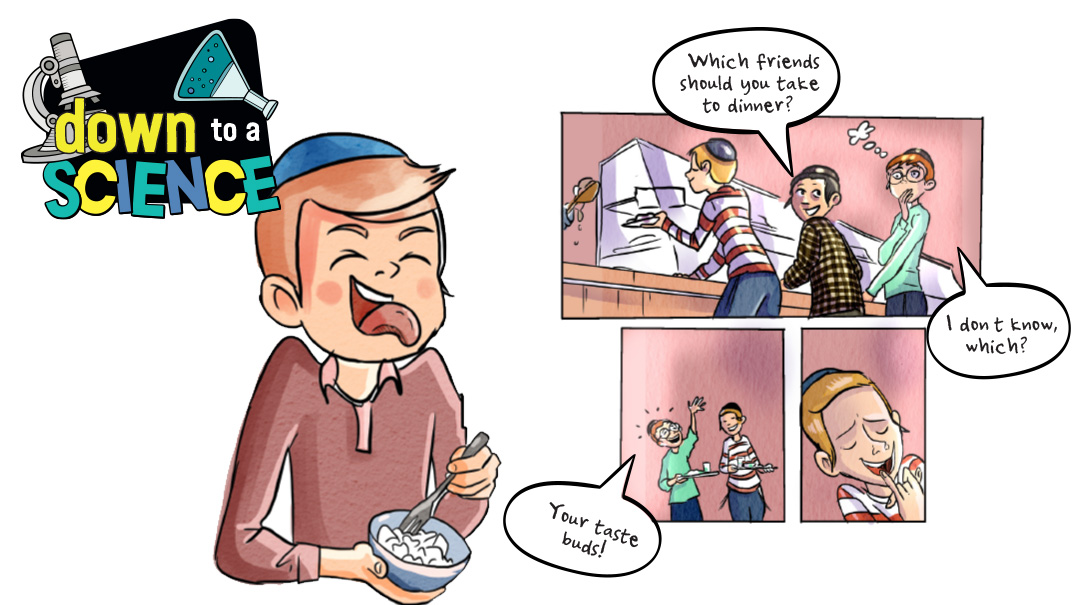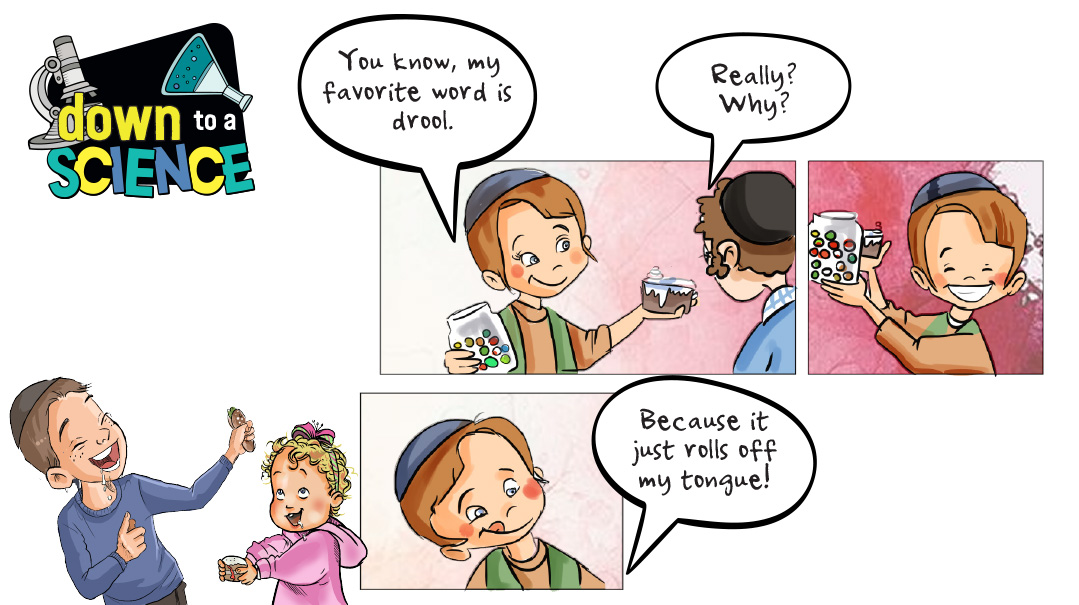What Is Color Blindness?

“But honestly, it isn’t my fault. Don’t you know I’m color-blind?”
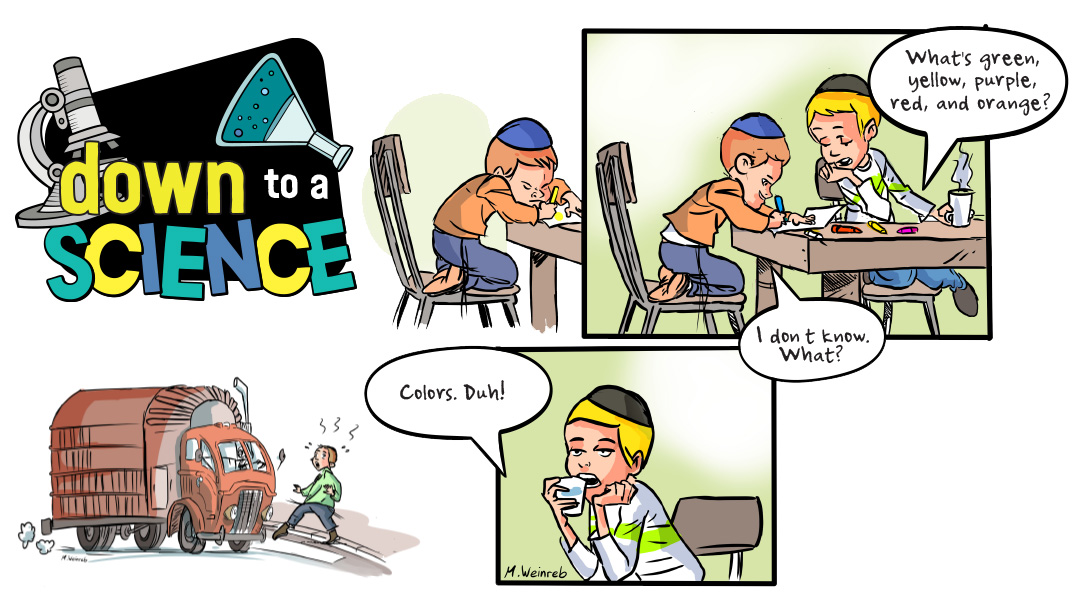
Hello kiddos,
This is Professor Mordy Maven, Thinker, Wonderer, and Figure-Outer of all things Science-ish. What that basically means is I try really hard to figure stuff out. I do the hard work so you don’t have to!
You would not believe what just happened to me. I actually had a near-death experience. Who ever imagined that walking home from school could be so dangerous?
Here’s how it happened.
After our last class finished, the bell rang and we all piled out. I decided to walk home with Yossi instead of waiting for the bus. When we got to the crosswalk, I suddenly remembered that I hadn’t seen Avigdor, my pet tarantula, all day. I started rummaging around in my knapsack. I said to Yossi, “I’m looking for Avigdor. Let me know when the light turns green so we can cross,” and he said, “It’s green now.”
So without looking up, I stepped off the curb and almost got smashed by a cement truck. Baruch Hashem, I jumped backward just in the nick of time. Then I looked at the traffic light. “Yossi,” I screamed, “that light is redder than borscht! Why’d you tell me it was green? Are you trying to get me killed so you can inherit my lizard collection?”
Yossi looked up sheepishly, “Sorry, Mordy,” he said. “But honestly, it isn’t my fault. Don’t you know I’m color-blind?”
That’s his apology? Really? What does that even mean? I had to find out more about this color-blind thing. I left Yossi at the corner and raced home to dive into my research.
As it turns out, it all begins with rods and cones. See, (Get it? See!) in the back of your eye is an area the size of a postage stamp called the retina. The retina receives the images that the eye sees and sends those images to the brain. How does it do that?
Within the retina there are two different kinds of cells, called rods and cones. Rods receive the images you see when the light is dim, like at night or in a dark room. Cones receive images in bright light. The rods and cones send signals to the brain. Then, the brain interprets these images into shapes and colors and other kinds of information. (Like, is that a bear or my father? Is that a dreidel or my math book?)
Different cone cells are sensitive to different wavelengths of light. That’s important because different wavelengths of light translate into color in your brain. Most people have red, blue, and green cones, which are sensitive to those colors and combinations of those colors. If your cones don’t work properly, your brain won’t receive the right message about what it’s seeing.
Okay, great. So that explains how we see the rainbow. But what in the world happened to Yossi? Why didn’t his rods and cones and retina and everything tell him the right color?
It turns out that how well your rods and cones work really depends on your mother. (If you’re starting to feel like everything in your life depends on your mother, that’s because it does!) You see, the genes that decide how your color vision works are passed down on the X chromosome. And that part is always inherited from your mother.
All babies are born color-blind. But in most cases, their color vision improves as they grow and they can usually see all colors by the time they’re six months. Not so in color-blind people! To make matters even more complicated, there are different types of color blindness. But for now, let’s talk about Yossi’s issue (because that’s the one that almost got me killed). The problem with Yossi (other than being a lousy friend!) is that he has deuteranopia. That means the green cones and the red cones overlap in his retina so he has trouble telling the difference between red and green. So to him, green grass or red apples might both look tan or gray. No wonder traffic lights are confusing!
But there’s good news too. Color blindness may be annoying, but it isn’t dangerous (unless you’re walking home with Yossi). And while it can’t be cured, scientists have actually developed special lenses and glasses that help people with color blindness see colors!
So basically, what I discovered after all my research is that it’s not Yossi’s fault that I almost got hit by a truck. It’s his mother’s fault! And guess what, there’s more good news. I found Avigdor! He was lounging in my sister’s bed. Now if I could only get her to stop screaming….
Here are some fascinating facts about color blindness:
In Romania, people with color blindness are not allowed to get a driver’s license because they can’t tell the difference between red and green. In the US they are not allowed to be pilots.
Boys are much more likely to be color-blind than girls. In fact, one out of every 12 boys is color blind but only one in every 200 girls.
The most common form of color blindness is red-green, but there’s also blue-yellow color blindness, called tritanopia. There are some very rare cases of people who have monochromacy — they can only see in black, white, and gray!
(Originally featured in Mishpacha Jr., Issue 908)
Oops! We could not locate your form.
